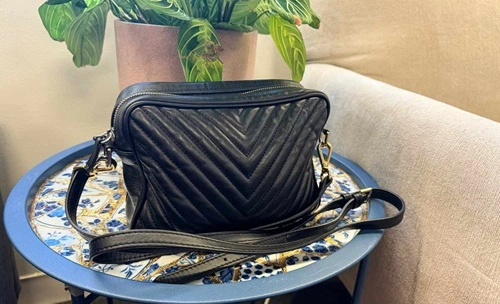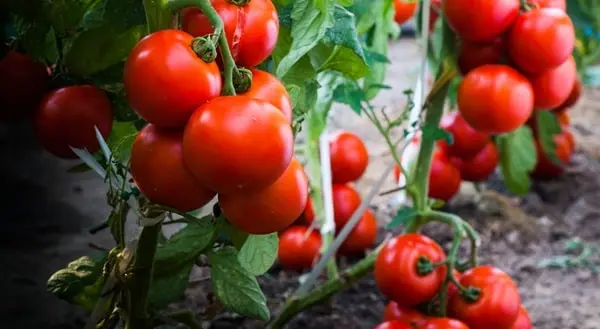Ladakh, often referred to as the “Land of High Passes,” is not only famous for its breathtaking landscapes and monasteries but also for its unique cultural traditions. Dance forms an essential part of Ladakhi culture, with traditional performances deeply rooted in religious, social, and historical significance. The dances of Ladakh, often performed during festivals and celebrations, reflect the region’s Tibetan Buddhist influence, tribal heritage, and warrior traditions.
Most of Ladakh’s traditional dances are associated with monasteries, Buddhist rituals, and seasonal festivities. They involve vibrant costumes, elaborate masks, and rhythmic music, creating an enchanting spectacle. Let’s explore some of the most famous traditional dance forms of Ladakh.
1. Cham Dance – The Sacred Mask Dance of Monasteries
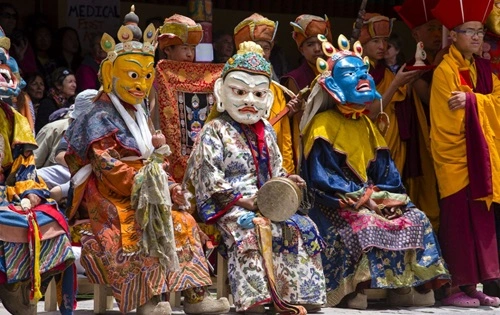
Cham dance is one of the most significant and revered dance forms of Ladakh, performed by Buddhist monks during monastic festivals like Hemis Tsechu, Dosmoche, and Losar. It is a ritualistic dance that symbolizes the victory of good over evil.
Significance:
Monks dress in elaborate brocade robes and wear large masks representing deities, demons, and spiritual beings. The dance is accompanied by traditional Buddhist instruments like long horns, cymbals, and drums. Cham dance is considered a form of meditation and a way to bring blessings to the community.
2. Shondol Dance – The Royal Dance of Ladakh
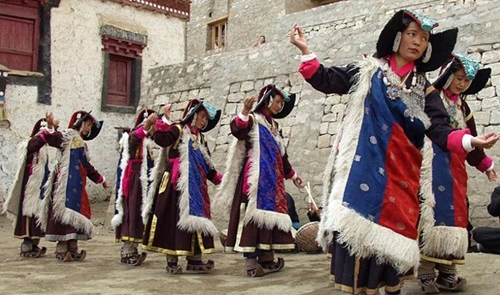
Shondol is an ancient royal dance form performed by women, particularly during the famous Ladakh Festival and on special occasions at the monasteries. It is considered one of the most graceful dance forms in Ladakh.
Significance:
Shondol dance was traditionally performed to entertain the king of Ladakh. Today, it is an integral part of cultural celebrations, with dancers dressed in beautiful Ladakhi attire, including traditional headgear (Perak) and jewelry. In 2018, the Shondol dance was recognized in the Guinness Book of World Records for the largest Ladakhi dance performance.
3. Jabro Dance – The Dance of the Nomadic Changpa Tribe

Jabro is a traditional dance of the Changpa tribe, a nomadic community that inhabits the high-altitude regions of Ladakh, particularly near Changthang. It is performed during New Year celebrations and religious festivals.
Significance:
The dance is accompanied by Ladakhi folk songs, with performers moving in a rhythmic, circular motion. Jabro dance reflects the deep connection of the Changpa people with their environment and nomadic lifestyle.
4. Tukhstanmo Dance – The Dance of the Harvest Festival
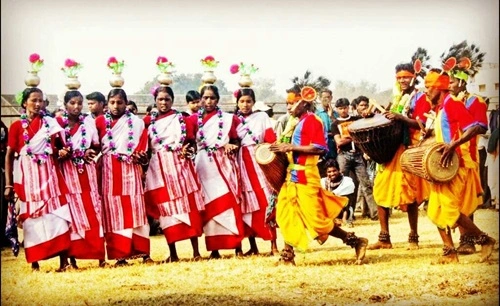
Tukhstanmo is a popular folk dance performed by Ladakhi women during harvest festivals. It is a joyful expression of gratitude for a successful agricultural season.
Significance:
Dancers wear traditional Ladakhi costumes and move gracefully to the tunes of folk songs, celebrating prosperity and togetherness. The dance is commonly seen during Ladakh Festival and village gatherings.
5. Mentok Stanmo Dance – The Dance of Flowers
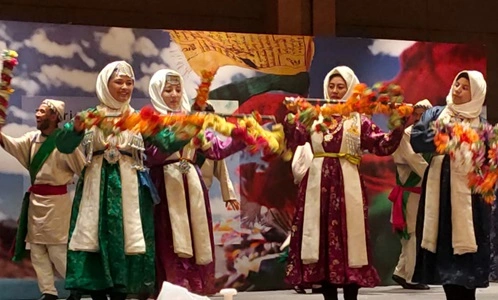
Mentok Stanmo, meaning “flower dance,” is a graceful Ladakhi folk dance performed mainly by young girls during festivals and special occasions.
Significance:
The dance represents the beauty of nature and the joy of life. Dancers wear vibrant attire adorned with floral patterns, moving in elegant formations. It is often performed during wedding ceremonies and cultural programs.
6. Spao Dance – The Warrior Dance of Ladakh
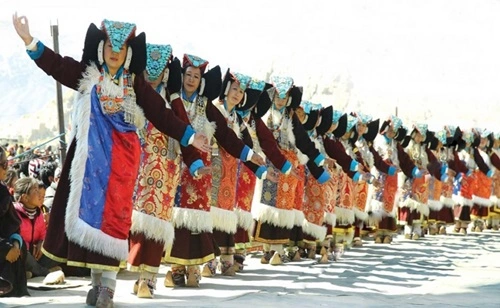
Spao dance is an ancient warrior dance that symbolizes the bravery and valor of Ladakhi soldiers. It is performed to honor the region’s martial traditions and past battles.
Significance:
Dancers dress in traditional warrior attire, carrying swords and shields, performing energetic movements that depict scenes of war and heroism. The dance serves as a reminder of Ladakh’s strategic and historical importance in the Himalayas.
7. Aryan Dance – The Cultural Dance of the Dard Tribe
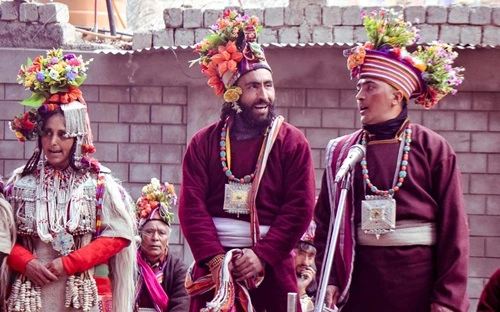
The Aryan dance is performed by the Brokpa or Dard community, an ethnic group residing in the Dha-Hanu region of Ladakh. It is a rare and unique dance form that reflects the distinct traditions of this ancient tribe.
Significance:
The dance is accompanied by folk songs in the Dardic language, with performers wearing traditional floral headgear and heavy silver ornaments. It is performed during local festivals and community gatherings, preserving the cultural identity of the Aryan tribes.
8. Loshon Dance – The New Year Celebration Dance
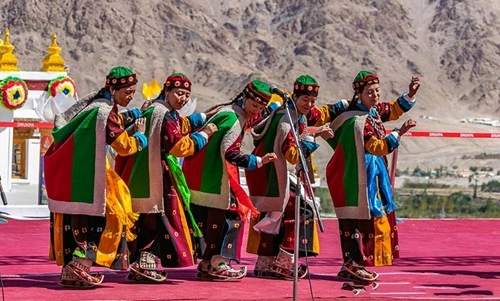
Loshon dance is performed during Losar, the Tibetan Buddhist New Year celebration. It marks the beginning of a new agricultural and spiritual cycle.
Significance:
Monks and villagers participate in this dance, wearing colorful robes and chanting prayers. It is a time for purification, renewal, and joy, with dance playing a central role in the festivities.
9. Bacha Nagma Dance – The Dance of Young Boys
Bacha Nagma is a traditional dance of Ladakh performed by young boys dressed as women. It is similar to the Kashmiri Hafiza dance and is performed during weddings and festive occasions.
Significance:
The dance showcases graceful movements and intricate footwork, with performers swaying to folk music. It highlights the cultural exchange between Ladakh and Kashmir.
10. Khatok Chenmo Dance – The Dance of the Great Victory
Khatok Chenmo is a sacred Buddhist dance performed to commemorate important historical and spiritual events. It is particularly associated with Hemis Monastery.
Significance:
The dance represents the spreading of Buddhism and the victory of Buddhist teachings over ignorance. Monks dressed in elaborate costumes perform this dance with great devotion.
Conclusion
The traditional dances of Ladakh are a vibrant expression of its rich cultural heritage, blending spirituality, history, and social customs. From the ritualistic Cham dance to the nomadic Jabro and the elegant Shondol, each dance form tells a unique story of the region’s past and present.
These dances not only entertain but also serve as a means of preserving Ladakh’s traditions in a rapidly modernizing world. As tourism and cultural festivals continue to grow, efforts are being made to keep these traditional art forms alive, ensuring that future generations can witness and appreciate the beautiful heritage of Ladakh.
Whether performed in the sacred monasteries of Leh or in the remote villages of Changthang, the traditional dances of Ladakh remain a mesmerizing and integral part of its identity, connecting people to their roots and the spirit of the Himalayas.
